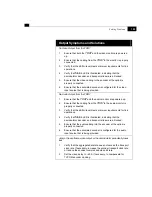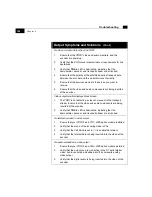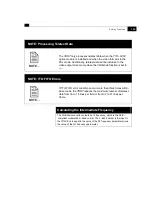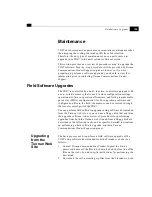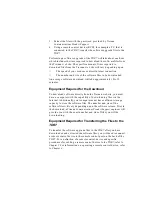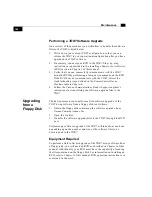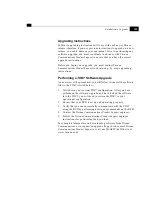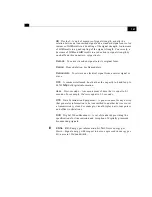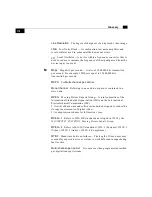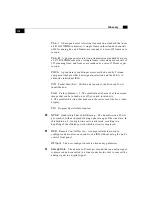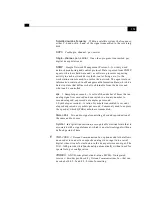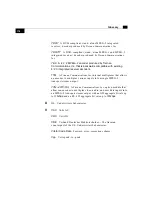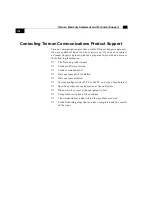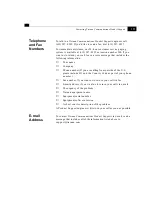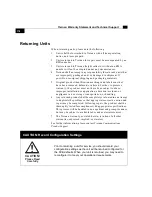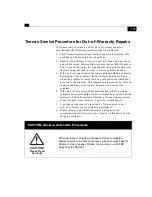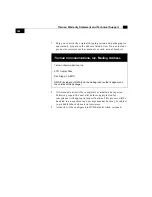
167
dB
Decibel—A unit of measure of signal strength, usually the
relation between a transmitted signal and a standard signal source. An
increase of 3
dB
results in a doubling of the signal strength. An increase
of 6
dB
results in a quadrupling of the signal strength. Conversely, a
decrease of 3
dB
and 6
dB
results in a reduction in signal strength by
one half and three quarters, respectively.
Decode
To convert a coded signal into its original form.
Demod
Demodulation. See Demodulate.
Demodulate
To retrieve an electrical signal from a carrier signal or
wave.
DS3
A commercial leased line that has the capacity to handle up to
44.763
Mbps
of digital information.
dsec
Deci–seconds—A measurement of time that is equal to 0.1
seconds. For example, 15dsec is equal to 1.5 seconds.
DTE
Data Termination Equipment—A generic name for any device
that generates information to be transmitted to another device or over
a transmission system. For example, visual display units, computers,
and office workstations.
DVB
Digital Video Broadcast—A set of standards providing the
specifications for transmission and reception of digitally processed
broadcasting signals.
E
Eb/No
Eb
=Energy per information bit;
No
=Noise energy per
Hertz—Signal energy with respect to noise, expressed in energy per
bit/noise in 1
Hz
bandwidth.
Summary of Contents for TDR7
Page 17: ...Chapter 1 TDR7 Overview...
Page 18: ......
Page 25: ...Chapter 2 Installing the TDR7...
Page 26: ......
Page 48: ...Chapter 2 34 Installing the TDR7...
Page 49: ...Chapter 3 Using the Control Front Panel...
Page 50: ......
Page 78: ......
Page 79: ...Chapter 4 Using a Remote Control Device Interface...
Page 80: ......
Page 111: ...Chapter 5 Configuring the TDR7...
Page 112: ......
Page 151: ...Chapter 6 Troubleshooting...
Page 152: ......
Page 169: ...157 Appendixes Maintenance Glossary Warranty Specifications and Index...
Page 170: ...I...
Page 176: ...164 Maintenance...

